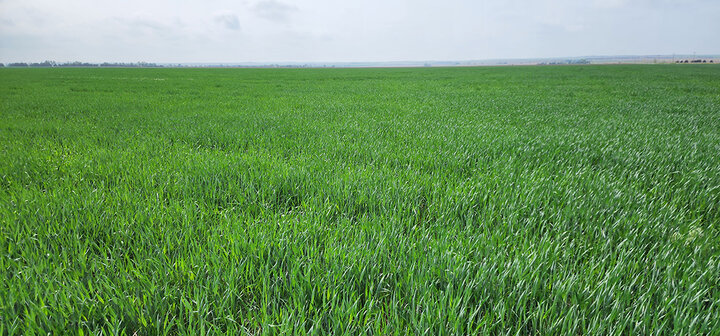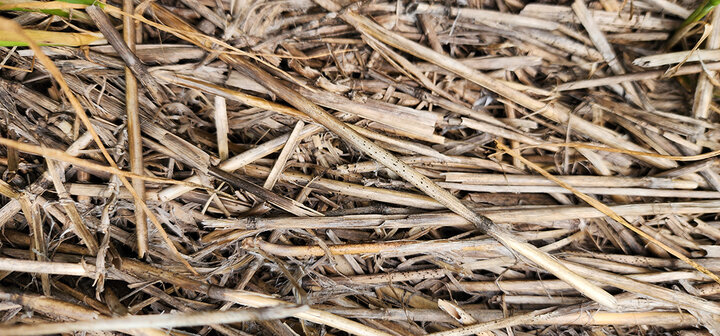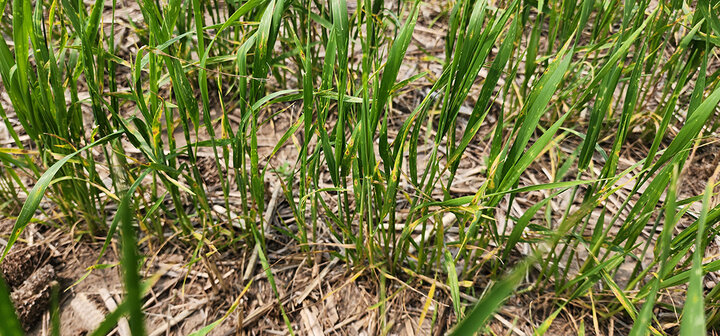On May 22-24, wheat disease surveys were conducted in the west-central, southwest and Panhandle of Nebraska. The wheat crop in the majority of fields visited looked good, with a luxuriant green canopy (Figure 1), thanks to good amounts of rainfall in recent weeks. Growth stage ranged from Feekes 9 (flag leaf emerged) in the Panhandle to flowering (Figure 2) or past flowering in the west-central and southwestern parts of the state. Foliar diseases were not observed in the majority of fields.


Several fields in the Panhandle had tan spot. These fields had wheat residue on the soil surface, which provided tan spot inoculum (spores). The tan spot fungus forms black fruiting structures called pseudothecia, which mature on wheat residue (Figure 3) in the fall and spring. In the spring and summer, they release spores called ascospores in the presence of moisture from rainfall or irrigation. These spores (primary inoculum) are spread by wind and infect foliage, starting from the lower leaves.
Following infection, oval- to diamond-shaped lesions consisting of tan necrotic spots with dark brown centers and surrounded with yellow halos form on the leaves (Figure 4). In the presence of moisture, spores of another type called conidia (secondary inoculum) form in the lesions and are spread by wind within and between fields and cause secondary infections. If the flag leaf is heavily infected, yield losses of up to 50% can result. Tan spot is managed by planting resistant varieties and applying a fungicide timed to protect the flag leaf. In areas with sufficient soil moisture, plowing to bury wheat residue reduces inoculum; however, this is not recommended in areas such as western Nebraska where soil moisture is insufficient.


The Fusarium head blight (FHB) risk map has been showing moderate to high risk in parts of western Nebraska. There have been significant amounts of rainfall in some areas in the region in recent weeks. FHB is favored by excessive moisture from rainfall or irrigation before, during and after flowering. The majority of FHB infections occur during flowering. Growers in the southwest and Panhandle regions of Nebraska should monitor the weather and their wheat fields, especially irrigated fields. Additional precipitation will increase the risk of FHB in these two regions.
FHB was not observed during last week’s surveys in west-central and southwest Nebraska, where wheat was flowering or past flowering. In the Panhandle, it was too early for FHB infections to occur because wheat was not headed yet. FHB is managed by planting moderately resistant varieties, crop rotation to a non-cereal crop, and applying a fungicide at early flowering. In the eastern half of Nebraska, wheat is past the flowering growth stage in most fields and it has been too dry, which has kept FHB risk low.
